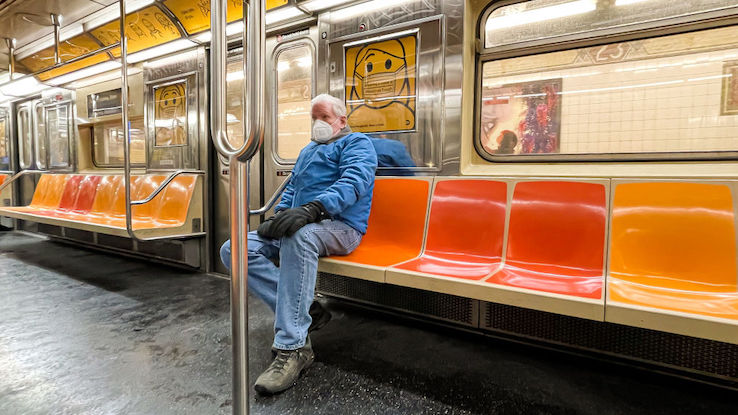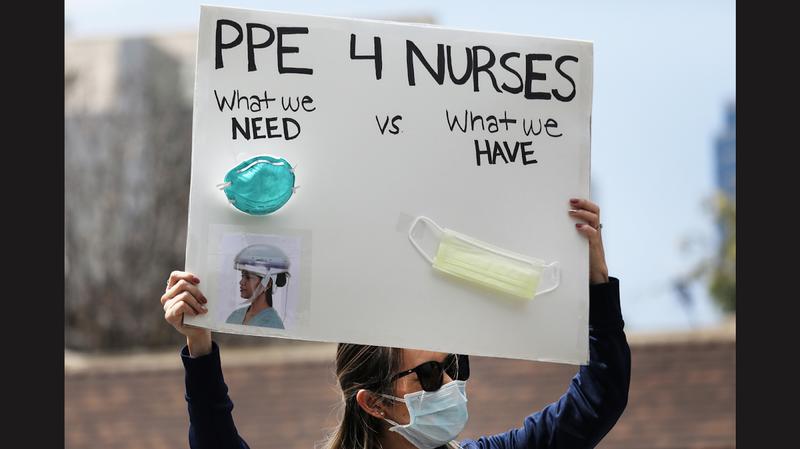Is It Bad To Put Makeup On Shortly After Face Mask

In the early on days of the coronavirus pandemic, state and federal government officials made some confusing and consummate U-turns in their recommendations well-nigh the potential benefits of wearing protective confront coverings to ho-hum the spread of COVID-nineteen. U.Due south. government leaders initially advised people to avert wearing face up masks. Merely, information technology was later revealed that this decision was an effort to foreclose nationwide mask shortages that would touch the availability of medical-form face coverings for healthcare workers. As shortages in personal protective equipment (PPE) eventually declined, organizations like the Centers for Disease Control and Prevention (CDC) and prominent healthcare leaders like Dr. Anthony Fauci, director of the National Institute of Allergy and Infectious Diseases, changed their tunes. Face coverings were deemed essential for preventing the spread of the virus.
These shifts from before advice were initially confusing to many Americans, specially those who believed they were doing the smart — and correct — thing by foregoing masks. Just since early April of 2020, the CDC's updated recommendation has become a mutual refrain: Masks slow the spread of COVID-19 and protect us and the people around us. Despite previous doubtfulness, it'due south clear at present that wearing masks is an essential chemical element of safeguarding our health. But non all face coverings are equally effective at stopping the spread of infectious respiratory droplets. Here's what you need to know nigh choosing the right — and about protective — mask.
The Differences Between N95 Masks & Surgical Masks
The first stride in helping out is to stay informed. If you panic-bought surgical masks or N95 masks months ago, now would be the perfect time to donate unopened products to your local infirmary. And, if you're all the same confused virtually the types of masks on offer, we'll break it down for y'all real quick.

N95 Masks: These thicker, stiff respiratory masks are equipped with filters that block 95% of particles that mensurate 0.three microns in size. Most chiefly, these masks are fitted to each individual, ensuring that they create a completely sealed barrier — significant there's very petty take a chance of transmission with these high-class masks.
If you aren't a healthcare professional, don't buy up N95s: They require specialized training to employ properly and, like most personal protective equipment (PPE) issued to healthcare workers, N95 masks are single-utilize but. This means the shortages are greater than ever and the CDC has begun recommending some rather risky strategies for working around the supply issue.
Surgical Masks: Loose-fitting and fabricated of melt-diddled material, these aren't as constructive as N95 masks. Notwithstanding, the fine mesh of synthetic polymer fibers can still shield the wearer from infectious droplets — and stop the wearer's potentially infectious droplets from beingness transmitted to someone else. Initial CDC guidelines stated that those who thought they'd been exposed to COVID-nineteen — be they symptomatic or not — were to wear masks or face coverings in social club to protect others, only now information technology's more than of a 2-way street.
If yous're still commuting on public transit and picking up groceries and prescriptions in person, or if you're a caretaker to someone, you'll desire to wear a face roofing, regardless of your COVID-19 status. Due to the shortage of N95 masks, healthcare professionals are now resorting to these cloth shields in order to mitigate potential COVID-nineteen transmission. This means the residuum of united states of america should probably think up some crafty, DIY face up coverings.
DIY Face Coverings: Tips & Tricks
According to Popular Science, researchers at the University of New South Wales who studied the use of reusable cloth masks discovered that "almost 97% of particles got through the material masks…compared with the 44% that penetrated synthetic medical masks." These moisture-retaining cloth masks are certainly far from perfect, which is why the Globe Health Arrangement (WHO) took such a strong stance against their use in January of 2020. However, as the COVID-19 pandemic continues, many experts, including those at the CDC, have concluded that for the general public some sort of face covering is better than no mask at all.

Across the country, grassroots efforts have sprung up, wherein clothiers looking to stay afloat and crafters wanting to do their role to help those on the front lines have created home-sewn medical-form masks for wellness workers who have been unable to become proper PPE. "No 1 before would have thought of fashion designers or anybody helping with DIY masks," says Katie Kozel, a medical supply chain consultant in Colorado who spoke with Popular Science. "Merely no one earlier would have thought of trying to use pelting ponchos equally isolation gowns either, which nosotros're seeing happen at present."
In many instances, those same designers are selling handcrafted masks to the general public. Just, given the nonetheless-limited supply of surgical and medical-grade masks, information technology may be best to become crafty with a DIY face covering instead. While some folks may feel confident enough to sew their own mask, those among usa who are less deft with a needle and thread can rest assured that in that location are some great no-sew methods out in that location as well. The CDC has several DIY face covering options on offer: a sewing pattern; a no-sew together method that involves cutting up an former T-shirt; and, perhaps the nearly popular ane, a no-sew design that requires a bandana, some condom bands and a coffee filter.
Regardless of which pattern yous choose, a DIY face roofing should fit equally snugly as possible; include multiple layers of fabric; and, of course, not restrict your animate. When y'all return home from running essential errands, remove your confront covering immediately and avoid touching your mouth, olfactory organ and optics. As always, launder your hands — and, after every use, toss your DIY mask into the washing motorcar to rinse abroad whatsoever potentially chancy droplets that may be on the material.
Although non a replacement for social distancing and good hygiene habits, wearing confront coverings in public tin certainly help mitigate the manual of COVID-19. After all, the CDC's goal in announcing this new directive is to "slow the spread," non to end it. For those who might dismiss this less-than-perfect practice, we suggest thinking of information technology this manner: When you ride your cycle, you wear a helmet. Although the helmet isn't guaranteed to protect you from whatever potential injuries, it can surely assistance, and then why wouldn't you clothing ane? Similarly, confront coverings won't stop y'all from getting or spreading COVID-19 altogether, but they tin can surely help, so why wouldn't you clothing ane?
Source: https://www.reference.com/science/face-masks-coronavirus-pandemic?utm_content=params%3Ao%3D740005%26ad%3DdirN%26qo%3DserpIndex
Posted by: dunnyourron.blogspot.com

0 Response to "Is It Bad To Put Makeup On Shortly After Face Mask"
Post a Comment